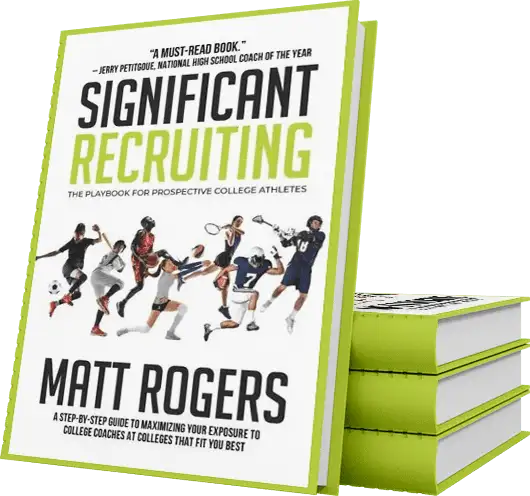“You must gain control over your money, or the lack of it will forever control you”. — Dave Ramsey
For most families, paying for college is scary. The numbers on the tuition bill don’t look real. The letters from colleges are full of jargon. And the thought of student loans feels like a lifetime of debt hanging over your child’s future.
Here’s the good news: you don’t have to be a financial expert to save money on college. You don’t need to know the stock market, and you don’t need a degree in accounting. What you do need is some straight talk about how the system really works—and a few simple moves you can make right now to lower the cost.
1. Watch When and Where Your Money Shows Up
Financial aid looks at your income and savings to decide what you can “afford.” The problem is, they count some money more harshly than others.
Here’s the simple way to think about it:
- Money in your retirement accounts (like a 401k) usually doesn’t count against you.
- Money sitting in your kid’s bank account does count, and it counts harder.
- Big “one-time” pay bumps, bonuses, or side job income in the year colleges look at can make your family look richer than you really are.
What you can do: Try to keep extra savings in your name, not your student’s. Don’t pull from retirement unless you have to. And if you can, avoid having your “biggest earning year” be the one colleges use to calculate aid.
2. Use a 529 Savings Plan the Right Way
If you’ve saved for college in a 529 plan, you’re in better shape than most. These accounts are treated fairly in the aid formula—especially when owned by parents.
What’s tricky? If the 529 is owned by a grandparent, it can cause aid problems when the money comes out. The safe bet is to keep it in the parent’s name.
Even if you haven’t saved much, don’t beat yourself up. A little saved is better than nothing, and it all adds up.
3. Don’t Be Afraid to Appeal Your Aid Package
A lot of families don’t know this: that first aid letter from the college isn’t always the final answer.
If your financial situation has changed—maybe a job loss, medical bills, divorce, the added responsibility of caring for elderly parents or a sick or debilitated family member, or if your family owns a small business where overhead and debt don’t show up on a W-2—you can appeal. Colleges call it “professional judgment,” and they really do adjust packages when families can show special circumstances. Tip: Keep good records and don’t be shy about asking. Many families get thousands more in aid simply because they spoke up.
I also recently had Dr. John Comerford, President of Otterbein University, on The Significant Coaching Podcast. He emphasized that many colleges now package financial aid twice for families. The first package usually includes your child’s merit award (their academic scholarship). Later, a second package arrives with grants, loans, and other scholarships layered in.
This means the first letter isn’t the end of the conversation—it’s really the start.
And here’s something most families never consider: distance from home matters. I’ve coached families through appeals where the deciding factor was that their child had to fly to and from campus multiple times per year. Colleges are often empathetic when families show how travel and moving costs add up, especially if the school is outside a realistic driving distance.
Bottom line: whether it’s a change in your family’s financial circumstances, caregiving responsibilities at home, business expenses that don’t show up on taxes, or the reality of added travel costs, you have the right to ask for more help. And often, colleges will find a way to give it.
4. Get Comfortable Talking About Student Loans
The biggest fear families have is taking on debt. And yes, loans can be dangerous if you overdo it. But not all student loans are bad.
Here’s what families need to know:
- Federal student loans don’t require payments until six months after graduation.
- The interest rates are usually lower than credit cards or private loans.
- Students can’t borrow unlimited amounts—there are limits to keep it manageable.
And here’s the part no one says: a small loan can actually be a good thing. It gives your student skin in the game. When they know they’ll be paying some of the bill after graduation, it makes them think harder about how they use their time in college. Accountability matters.
And don’t overlook work study opportunities. If your child is offered work study in their aid package, never say no. Outside of strong high school academics, it may be the easiest way for your student to offset costs each year. These jobs are on campus, flexible with class schedules, and build responsibility without overwhelming them.
5. Compare Offers and Negotiate for Your Top Choice
Not every college gives the same deal. Some schools are known for being more generous than others. That’s why it’s important to compare offers side by side before committing.
Before you even compare aid letters, there’s one more simple strategy that can save thousands: take and re-take the ACT or SAT. All colleges are fighting for the highest test scores because it boosts their rankings. Even a single point higher on the ACT, or 50–100 points higher on the SAT, can translate into thousands of extra dollars in merit scholarships over four years. It’s one of the most underrated levers families can pull—and don’t let the idea of a school being “test optional” keep you from investing in ACT/SAT tutoring. The test score may be optional, but by not taking the option, you may lose more money than you think you were saving.
Here’s where most families miss out: they see a better offer from another school but don’t realize they can go back to their child’s top choice and ask for help. Colleges want students who are a great fit, and sometimes they’ll adjust the package to make it possible.
I’ve coached many families through these conversations, and here’s the key: keep the focus on your child’s top choice and how much they want to be there. You’re not “shopping them around” — you’re showing loyalty to one school while being honest about affordability.
Here’s a script you can use:
“Your college is my son/daughter’s number one choice. He/she loves your environment, you have his/her ideal major, and it’s the area he/she wants to live in after college. We have other financial aid offers where we will have to pay [$ amount out-of-pocket costs difference between schools], and the extra money we would have to spend makes it very challenging for us to afford your school over the other. Is there anything you can do to help us bridge that gap?”
That’s it. Simple, clear, and respectful. You’re not demanding; you’re inviting the financial aid office to be a partner in helping your student attend the place they love most.
And don’t forget scholarships on top of this. Outside awards can tip the scale. I recommend families check:
- Fastweb (fastweb.com)
- Scholarships.com (scholarships.com)
- Going Merry (goingmerry.com)
- Bold.org (bold.org)
- CareerOneStop (careeronestop.org)
Winning even one or two small scholarships can cut thousands off your family’s bottom line. My advice is to apply for one on-line scholarship per week. The more you apply, the more your odds go up to be awarded more.
My Recommendation for Families
I’ve worked with thousands of families, and here’s what I see: the parents who feel the most overwhelmed are usually the ones who never got a chance to learn how the system works. You don’t have to know everything. But you do need to know enough to make smart choices.
That’s why I recommend checking out resources like FinAid.org, StudentAid.gov, College Aid Pro, and The College Financial Lady blog. They break this stuff down in simple language—no financial background required.
Wrapping It All Up
Paying for college is stressful, but it doesn’t have to wreck your family’s finances. If you keep an eye on where your money is, use your 529 wisely, don’t hesitate to appeal (especially when distance, caregiving, or small business expenses add costs), encourage your student to take loans responsibly and say yes to work study, and negotiate respectfully with your top-choice college—you can make this process manageable.
Remember, the goal isn’t just “getting in.” The goal is getting through college without sinking the whole family in debt.
If you’d like deeper guidance for your family—or if you want me to speak to your school, team, or organization about simplifying financial aid and the college journey—visit CoachMattRogers.com. There you can schedule a strategy session for your family or book me to speak at your event.






